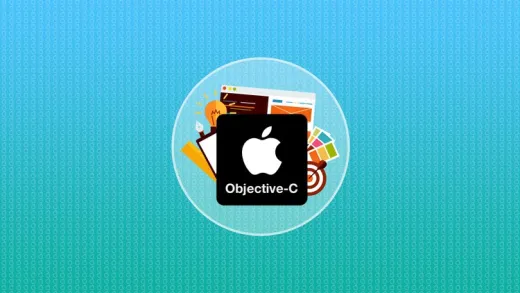Brief Summary
This course dives into the 23 design patterns from the Gang of Four book, helping you understand how to implement them in Python. Perfect for leveling up your software design skills, it’s practical, hands-on, and super applicable for real-world projects.
Key Points
-
Covers all 23 Gang of Four design patterns
-
Focus on Creational, Structural, and Behavioral patterns
-
Includes Python code implementations for each pattern
-
Great for enhancing software design skills
-
Prepares you for software design interviews
Learning Outcomes
-
Understand and apply all 23 design patterns in Python
-
Improve object-oriented design skills
-
Gain confidence for technical interviews
-
Learn best practices for flexible and maintainable software
-
Explore Python source code for better implementation insights
About This Course
Design Patterns In Python OOP for Python Projects Software Architecture Using GoF Design Patterns System Analysis UML
This "Design Patterns In Python" course covers all 23 Gang of Four ( GOF ) design patterns with Python code implementation.
Why learn Design Patterns
Industry requires great software designers
Demand for Software Design Skill is high
For flexible and extensible software design
To enhance the Object Oriented Software design skill
To Develop/Understand the design of software product
Moving up in Technical ladder by having great tech skill
Well prepared for interview
Design and architecture of any software/solution provides the base and makes it flexible, extensible for future requirements. A good designed software/solution makes it easy to understand and maintain. Design patterns are known as best practices to design software for problems which are repeated in nature.
This course is second one in my complete Python Design and Development course series-
This "Design Patterns In Python" tutorial gives you understanding of all 23 design patterns described in Gang Of Four book - "Design Patterns: Elements of Reusable Object-Oriented Software", by Gamma, Helm, Johnson and Vlissides.
This Design Patterns through Python course covers :
Creational Design Patterns : Abstract Factory, Builder, Factory Method, Prototype, Singleton
Structural Design Patterns : Adapter, Bridge, Composite, Decorator, Facade, Flyweight, Proxy
Behavioral Design Patterns : Chain of Responsibility, Command, Interpreter, Iterator, Mediator, Memento, Observer, State, Strategy, Template Method, Visitor
Here is the course content-
Introduction to Design Patterns
Creational Design Patterns
Structural Design Patterns
Behavioral Design Patterns
In this Design Patterns using Python course, each design pattern is explained in a simple way with intent, problem, solution and structure. Also the information of participants, collaboration, consequences and code implementation are explained for each one. The design pattern structure or example implementation of Python source code are explained to understand how it will be implemented using Object Oriented features of Python.
This Design Patterns with Python course also provides Python source code of each design pattern to understand it in better way. This helps in applying the variation on implementation to see how it can resolve some other implementation bottleneck. There are 125 quiz questions on Creational, Structural and Behavioral design patterns to check your understanding.
I have used Free PyDev for Eclipse, you can use any Python IDE/Environment.
This "Learn Design Patterns In Python" online course on udemy will help to understand the best practices for design and apply them to do the better design of software projects/solutions in Python. It will also help you to prepare well for Design Patterns in Python interview questions. Knowledge of design patterns increases the capability to address interview questions of software design.
It will be good to have the Gang Of Four book - "Design Patterns: Elements of Reusable Object-Oriented Software", by Gamma, Helm, Johnson and Vlissides as a reference book for this course.
Design Patterns In Python free source code implementation is available in pdf to download.
What Students Say-
"Solid exposition of design patterns."
"The material is very clear so far and explained well."
So what are you waiting for, click on Buy button to enroll now and start learning.
23 Python design patterns described in Gang of Four ( GOF ) book
Python design patterns implementation understanding
Python source code of each design pattern









Dheeraj J.
Did not like the way of explaining the concepts.